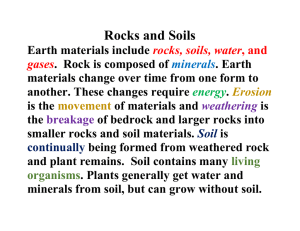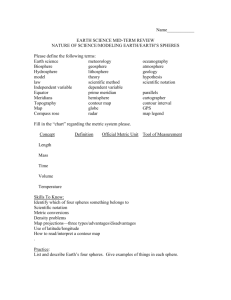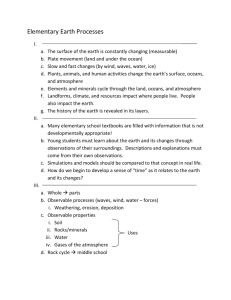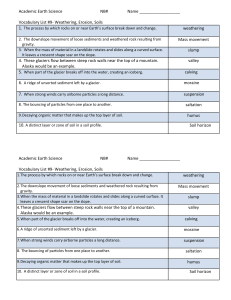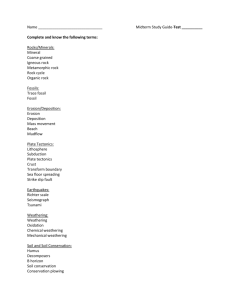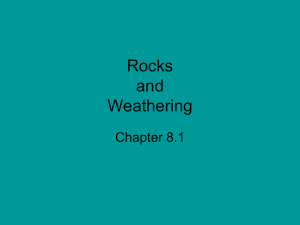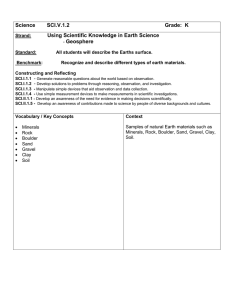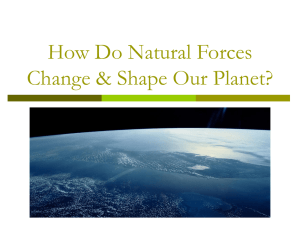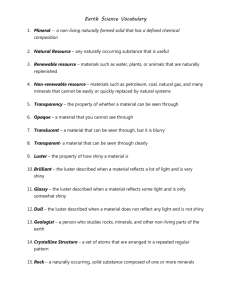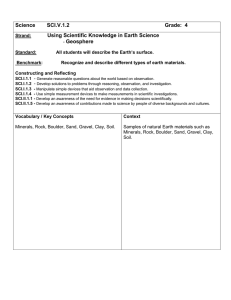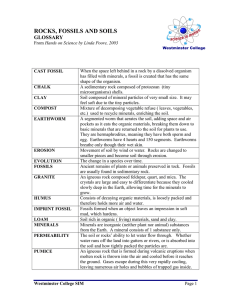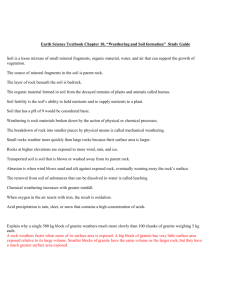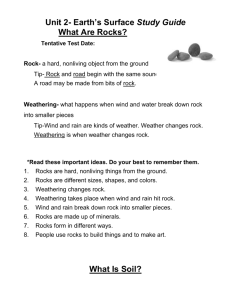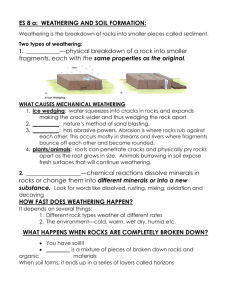Weathering & Mass Wasting
advertisement
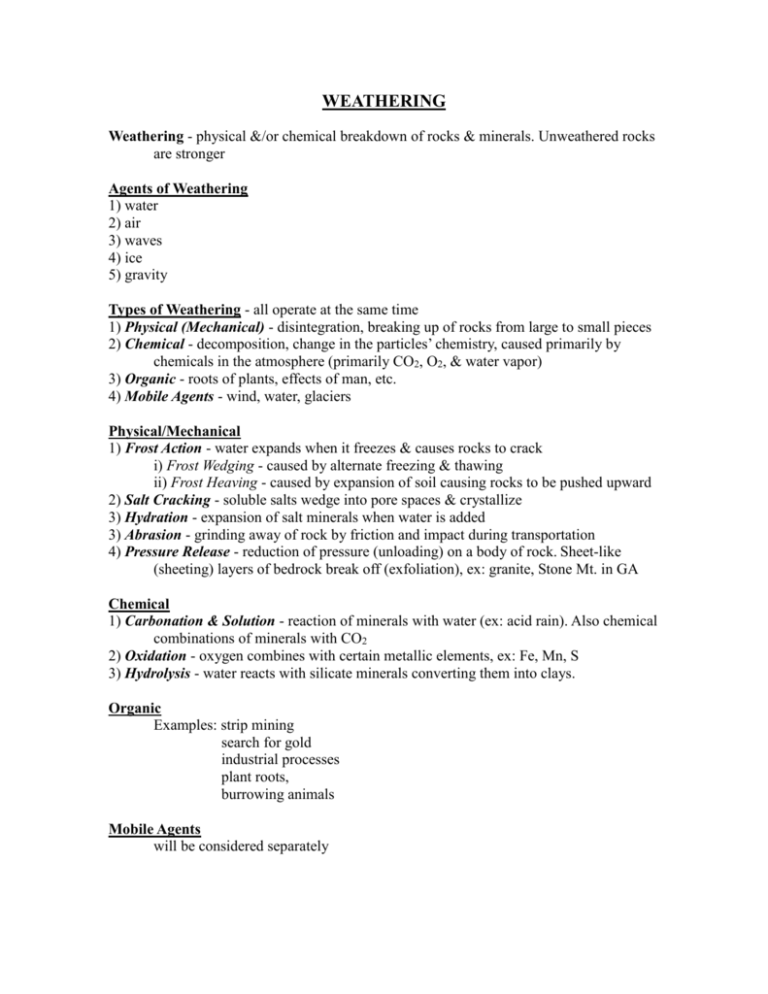
WEATHERING Weathering - physical &/or chemical breakdown of rocks & minerals. Unweathered rocks are stronger Agents of Weathering 1) water 2) air 3) waves 4) ice 5) gravity Types of Weathering - all operate at the same time 1) Physical (Mechanical) - disintegration, breaking up of rocks from large to small pieces 2) Chemical - decomposition, change in the particles’ chemistry, caused primarily by chemicals in the atmosphere (primarily CO2, O2, & water vapor) 3) Organic - roots of plants, effects of man, etc. 4) Mobile Agents - wind, water, glaciers Physical/Mechanical 1) Frost Action - water expands when it freezes & causes rocks to crack i) Frost Wedging - caused by alternate freezing & thawing ii) Frost Heaving - caused by expansion of soil causing rocks to be pushed upward 2) Salt Cracking - soluble salts wedge into pore spaces & crystallize 3) Hydration - expansion of salt minerals when water is added 3) Abrasion - grinding away of rock by friction and impact during transportation 4) Pressure Release - reduction of pressure (unloading) on a body of rock. Sheet-like (sheeting) layers of bedrock break off (exfoliation), ex: granite, Stone Mt. in GA Chemical 1) Carbonation & Solution - reaction of minerals with water (ex: acid rain). Also chemical combinations of minerals with CO2 2) Oxidation - oxygen combines with certain metallic elements, ex: Fe, Mn, S 3) Hydrolysis - water reacts with silicate minerals converting them into clays. Organic Examples: strip mining search for gold industrial processes plant roots, burrowing animals Mobile Agents will be considered separately MASS WASTING Mass Wasting (Mass Movement) - downslope movement of material (rock & soil) due to gravity. May be slow or fast, wet or dry, gentle or steep. Types of Motion 1) Fall - movement involves the free-fall of detached individual pieces of any size 2) Slide - movement involves material that remains fairly coherent & moves along a well-defined surface 3) Flow - material moves downslope as a viscous fluid Factors Controlling Mass Movements 1) slope angle 2) local relief 3) thickness of debris 4) orientation of planes of weakness 5) climatic factors 6) vegetation Causes of Mass Movements 1) earthquakes 2) added weight to upper part of slope 3) undercutting of bottom of slope 4) water Fast Movement Examples 1) Rock Slides (hard material) - friction must be overcome first. An earthquake, blasting, heavy rains can set it off. Movement occurs along surfaces of weakness within the bedrock. The rocks at the base are called talus. zones of weakness - ex: foliation, bedding planes, joints, faults 2) Landslides (soft material - soil & rock) - mass of soil & weathered rock that moves as a unit on a slip fault 2 types a) glides (translational) - slippage is planar b) slumps (rotational) - slippage is concave upward; can be caused by undercutting (ex: waves in California) or earthquake 3) Avalanches - snow & ice 4) Flows - soil & water slurries - resembles that of a viscous fluid types a) earthflows - characteristic of grass covered earth movement b) debris/mudflow c) lahars - volcanic mudflows Slow Movement Examples 1) Soil Creep - slow glacier-like movement of shallow soil downslope with surface levels moving fastest & rate of movement decreasing with depth. Primarily due to expansion & contraction (expands when wet, gets warm, or freezes; contracts when dries, cools, or thaws); also due to gravity & rainfall & no vegetation 2) Solifluction - rising up of soil due to alternate freezing & thawing over permafrost
